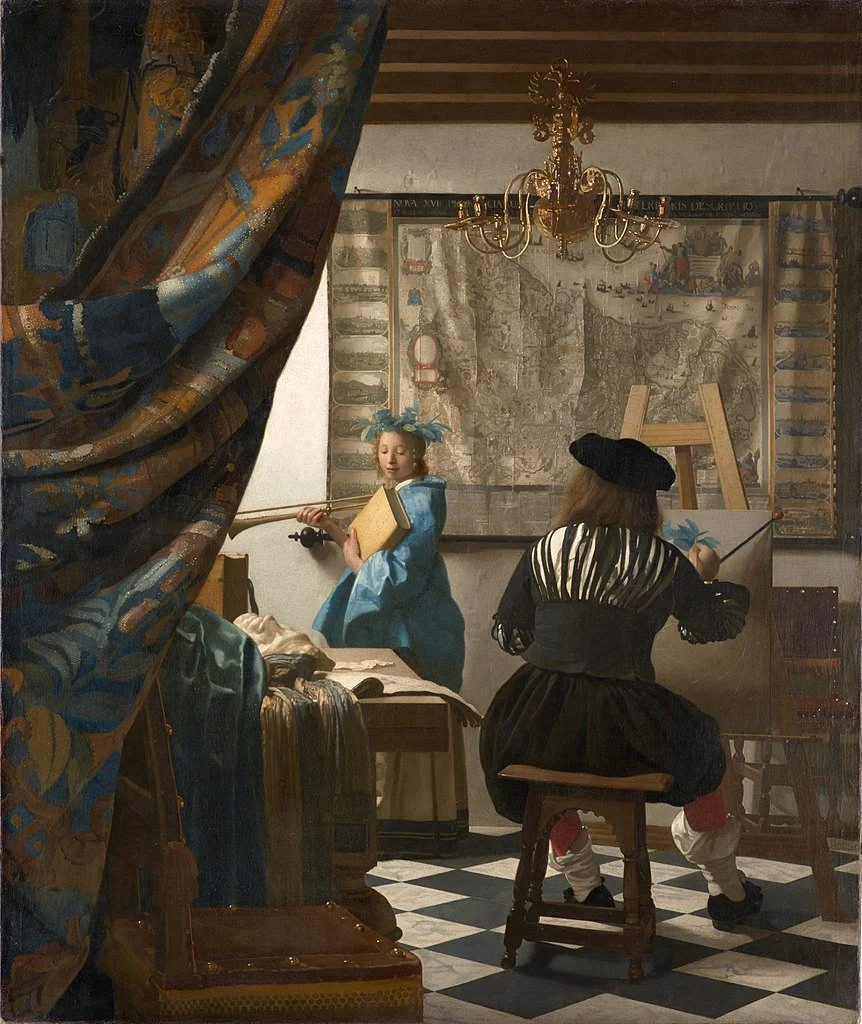The art of imitation
Imitation is a natural part of human learning and development. While it’s often avoided out of fear of unoriginality or plagiarism, it’s essential to mastering a skill. Through emulating the styles and techniques of experts in your chosen field, you can rapidly accelerate your progress and begin finding your own voice.
Build off of your predecessors
Regardless of the field or subject—art, music, poetry, science—it’s the product of the thousands or tens of thousands of experts who came before you. There’s something you can learn from your predecessors, like the exercises they practiced and their specific routines.
“For decades or even centuries, people have compiled knowledge of how to get things done in a particular field, each generation improving on the past.” – Robert Greene, Mastery
By emulating the masters at their prime—copying their exact brush strokes or their specific formulation of a poem, for instance—you can learn the rules and techniques of your field faster. This helps you avoid wasting time on ineffective methods.
John Keats, one of the greatest English poets, learned to write by intensely studying and imitating the works of his predecessors:
“Sometime later, he had the desire to try his hand at writing poetry, but lacking any kind of instructor or literary circle he could frequent, the only way he knew to teach himself to write was to read the works of all the greatest poets of the seventeenth and eighteenth centuries.” – Robert Greene, Mastery
Our brains are primed for imitation
The reason imitation is so effective for learning is that our brains are wired for it:
“The natural model for learning, largely based on the power of mirror neurons, came from watching and imitating others, then repeating the action over and over. Our brains are highly suited for this form of learning.” – Robert Greene, Mastery
An example of imitation is the apprenticeship model that developed during the Middle Ages. Students worked in guilds for years, observing and absorbing the skills of their master craftsmen (like blacksmiths, masons, seamstresses, and bakers). At the end of their apprenticeships, they had to pass a master test or produce a master work to prove their skill and be able to practice on their own.
During this time, emulation was the primary path to skill mastery out of necessity. Since materials were expensive and resources were limited, students had no choice but to learn by closely watching and copying their masters. It was too expensive to practice independently:
“Because few books or drawings existed at the time, apprentices would learn the trade by watching Masters and imitating them as closely as possible. They learned through endless repetition and hands-on-work, with very little verbal instruction.” – Robert Greene, Mastery
It’s incredible to think of what apprenticeships enabled; without them we likely wouldn’t have the masterpieces in the Sistine Chapel, the gothic cathedrals sprawling across Europe, or the inventions of the Renaissance. Many of the greatest contributions to society are a product of intense years of training under a guide.
Focus on developing tacit knowledge
When you’re first starting out, you don’t have a sense of the techniques of your craft, like which rules are important to follow, when to deviate, and why. You lack the intuition and judgment.
The goal of apprenticeship and imitation is to develop this type of knowledge, which is difficult to otherwise convey.
“In acquiring any skill, there exists a natural learning process that coincides with the functioning of our brains. This learning process leads to what we shall call tacit knowledge—a feeling for what you are doing that is hard to put into words but easy to demonstrate in action.” – Robert Greene, Mastery
By trying out the styles of many masters in your field—for example, recreating a favorite poem and tracking the specific rhyme and meter—you start to implicitly understand the underlying rules.
Imitation also provides you with insights into your strengths and weaknesses. As you emulate a work, you learn the components that come to you more naturally and the ones that are harder for you to replicate.
Differentiation is a product of imitation
Ironically, the outcome of imitation isn’t becoming a carbon copy of the person you’re emulating, but it’s finding your own voice. No two people are entirely alike, so as you’re trying to emulate someone, your differing thoughts, opinions, and styles come out naturally.
“Imitation fades as a poet’s own style—that is, the poet’s own determined goals set out in the technical apparatus that will best achieve those goals—begins to be embraced.” – Mary Oliver, The Poetry Handbook
This deviation is your unique voice and style, as was the case with John Keats:
“He then wrote his own poems, using the poetic form and style of the particular writer he was trying to model himself after. He had a knack for imitation, and soon he was creating verses in dozens of different styles, always tweaking them a little with his own voice.” – Robert Greene, Mastery
Over time and through repetition, your deviations take shape and become second nature. A pattern forms. This pattern is the source of your originality and mastery, which enables you to produce uniquely exceptional output.
Do you have any tips for mastering a skill through imitation? Let me know in the comments section below!




